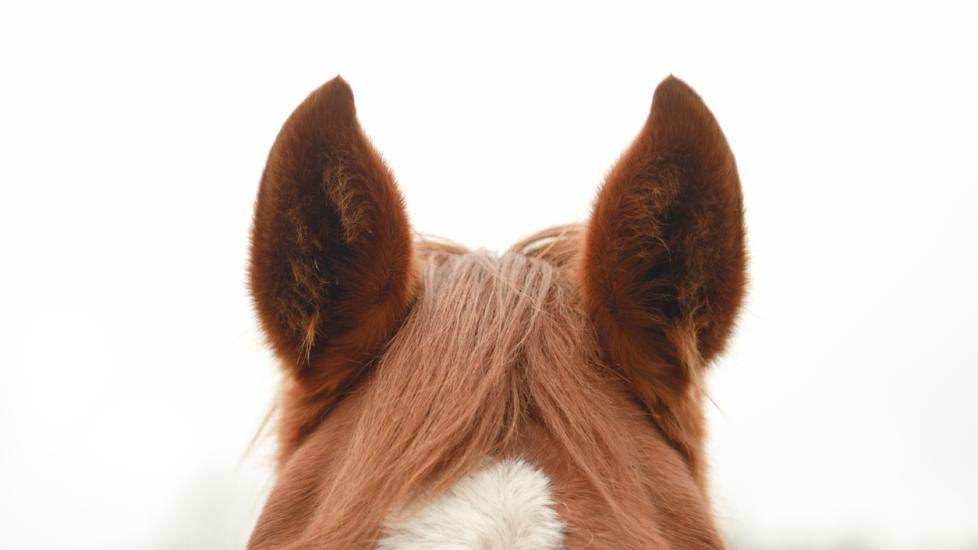Inner Ear Plaques in Horses
What are Ear Plaques in Horses?
Ear plaques, also known as papillary acanthoma or aural plaques, are small wart-like nodes or white flakes that appear on the inside of a horse’s ear. This virus generally remains in the body, so the plaques can be difficult to cure permanently, and often return. Any breed or age of horse can be affected.
Symptoms of Ear Plaques in Horses
Typical signs of ear plaques include:
-
Small, white “cauliflower” like warts or white flakes
-
Pink, thickened skin under the lesions
-
Can affect one or both ears
-
Head shaking or sudden head shyness
The plaques themselves are usually non-irritating, but the ears can become inflamed or irritated by the transmitting fly bites.
Causes of Ear Plaques in Horses
Ear plaques are thought to be caused by a few types of papillomaviruses, the same family that causes warts on the faces of young horses. It is typically spread by biting flies, although specific strains of the virus can be shared via direct contact. These flies are most active at dawn and dusk, and like to feed on horse’s ears, faces, and abdomens because these areas are harder for horses to stomp or bat such annoyances away.
How Veterinarians Diagnose Ear Plaques in Horses
Diagnosis of ear plaques is typically presumptive based on clinical signs and history, but definitive diagnosis can be made by taking a small sample of the offending flakes and having them evaluated under a microscope in a laboratory.
Treatment of Inner Ear Plaques in Horses
Ear plaques are primarily a cosmetic issue, so they are typically treated with “benign neglect” aka watching and monitoring for changes or secondary problems. If your horse develops inflammation or scabs from the fly bites themselves, your veterinarian may remove the plaques and start them on a topical anti-inflammatory or antibiotic ointment. Some plaques may be treated with a cream called imiquimod, but this can be irritating to the local healthy tissue and may worsen head shyness.
Recovery and Management of Inner Ear Plaques in Horses
Unfortunately, aural plaques can be difficult to cure because they can return even after removed. Once a horse acquires the papillomavirus—it lives in the body indefinitely– so on-going flares can occur. The ears may become slightly thickened over time due to the plaques, but this isn’t an irritating condition itself.
If your horse does get inflammation from the primary fly bites and the ears become irritated, this can predispose them to secondary skin infections. Head shyness may become a permanent issue, which can make haltering and bridling difficult. It is important to intervene immediately if your horse starts to display signs of head shaking or suddenly becomes resistant to you touching their ears.
The best way to prevent inner ear plaques from forming in the first place is by having your horse wear a fly mask with ear covers, and apply fly spray daily in the warmer months to protect them from biting flies. Summer months in particular see an uptick in numbers of these pests, so even if your horse already has the virus dormant, preventing new bites from occurring will help prevent new cases from re-starting.
Inner Ear Plaques in Horses FAQs
Why does my horse have crusty ears?
There are many reasons for crusty ears in horses, including aural ear plaques, infection, inflammation from parasites, and other underlying processes. Resist the urge to pick these scabs or flakes off, as this can further irritate and worsen aural plaques.
How do I clean the inside of my horse’s ears?
Your veterinarian may recommend cleaning your horse’s ear with an ear flush or applying a daily ointment. Follow their directions closely for ear flushes. To clean an ear and apply ointment, gently use a warm damp gauze to rub the ear and remove debris. Once the ear is clean, you can put the ointment on a gloved finger and cover the affected area. Treatment frequency may range from twice daily to a few times a week.
Featured Image: iStock.com/schulzie
